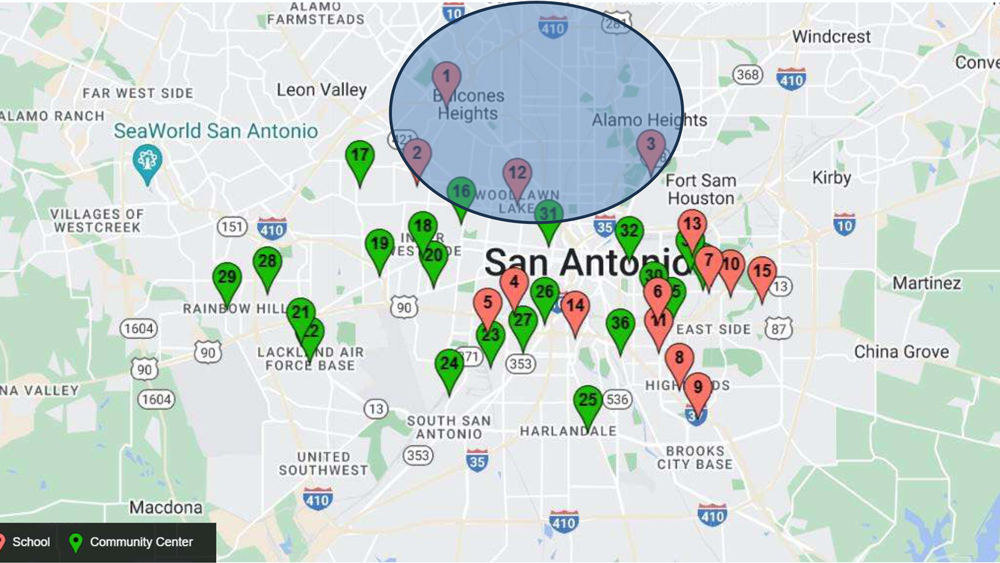San Antonio ISD is working with The Counselors of Real Estate Consulting Corps as the result of a grant from the National Association of Realtors® coordinated through the local San Antonio Board of Realtors®. Consultants with the Counselor group will offer suggestions and a list of best practices to the district and its facilities repurposing panel. SAISD is embarking on a historic repurposing of more than a dozen school buildings by either finding a district use for a facility or making it available for lease to an entity that would meet a community need.
“Your mission is in education, and we want to be able to help you manage the real estate in a way that is not taking away from your mission so you can focus on your priority of educating students,” said Jacqueline Buhn, CRE, Consulting Corps team leader for the project. “You have to be good stewards of your property while you continue your focus of quality education for your students.”
The group dispatched a five-person team, who spent the first week of June interviewing more than 75 individuals including district board members, leaders and staff; community leaders and residents; City of San Antonio and Bexar County representatives; parents and teachers; as well as nonprofit representatives.
At the conclusion of the week, the CRE Consulting Corps team gave a summary report to district board and staff leaders, a student advisory committee member, and repurposing panel members. In the summary, experts from the CRE provided guidance on the potential organization and timelines for how the district could repurpose the buildings that will now be vacant following the board’s November 2023 rightsizing decision, which consolidated teachers and students into fewer and more modern facilities.
“Be future oriented. Not just what is here, or what was here, but what’s going to be here,” Monica Parikh, CRE, another member of the Consulting Corps team, said.
Highlights of the summary report include the following guidance:
Consider using the buildings for district needs first, and then look to the city, county, or large nonprofit agencies as partners who have aligned interests in serving the community and who will have the ability to modify buildings and execute a long-term lease.
Create policies for buildings occupied by third parties, and then organize the repurposing process around the type of occupant.
Anticipate a process that takes at least 9 to 16 months, and this timeline will include communication of potential use, community meetings, building designs and alterations, lease development, inspections and moves.
Conduct neighborhood assessments to quantify missing or desired services, such as community centers or healthcare facilities. For instance, the district could use
census data to identify segments of the population, by age, that could need services surrounding each school.
Evaluate accessibility, land use regulations, infrastructure, and neighborhood characteristics for each site.
Seek expert legal advice when structuring leases and reviewing/removing antiquated deed restrictions.
Identify a point of contact in the district to handle asset/property management for third party users, which will be different in function from facilities management for their own users.
Maintain vacant facilities’ green spaces.
Continue community engagement through meetings and a web presence providing timelines and potential uses considered for each building.
“We are always learning, and I am grateful for our partners in this journey,” Superintendent Jaime Aquino said. “These experts have pushed my thinking on ways to make this process even better for our community. I value their insight and look forward to our continued work with them.”
In addition to Jacqueline Buhn, CRE, and Monica Parikh, CRE, the Consulting Corps team includes Steve Price, CRE, Claudia Robinson, CRE, and Ted Whitmer, CRE. The CRE Consulting Corps will update the summary with a full report in about 60 days.







